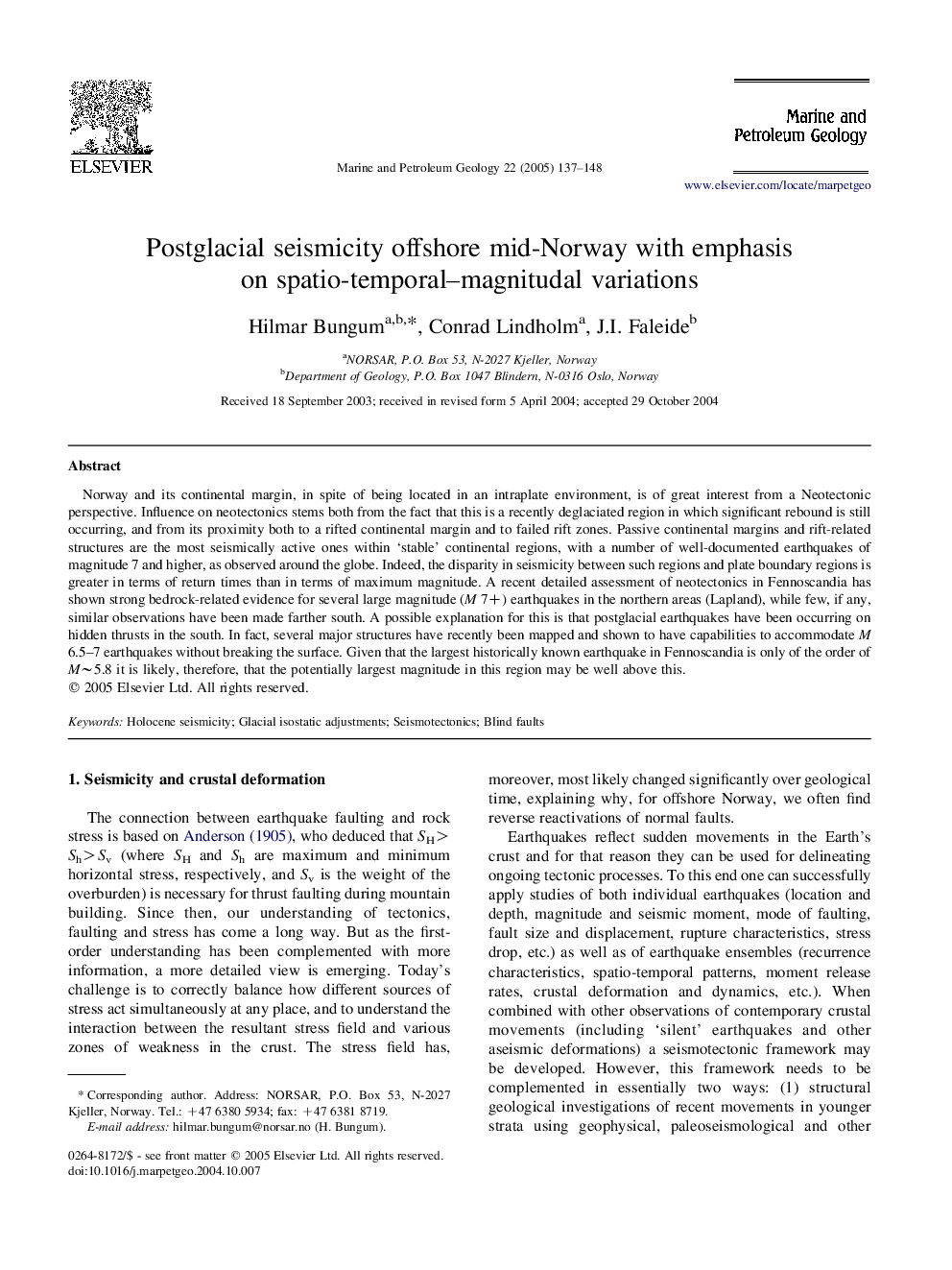| Article ID | Journal | Published Year | Pages | File Type |
|---|---|---|---|---|
| 9528456 | Marine and Petroleum Geology | 2005 | 12 Pages |
Abstract
Norway and its continental margin, in spite of being located in an intraplate environment, is of great interest from a Neotectonic perspective. Influence on neotectonics stems both from the fact that this is a recently deglaciated region in which significant rebound is still occurring, and from its proximity both to a rifted continental margin and to failed rift zones. Passive continental margins and rift-related structures are the most seismically active ones within 'stable' continental regions, with a number of well-documented earthquakes of magnitude 7 and higher, as observed around the globe. Indeed, the disparity in seismicity between such regions and plate boundary regions is greater in terms of return times than in terms of maximum magnitude. A recent detailed assessment of neotectonics in Fennoscandia has shown strong bedrock-related evidence for several large magnitude (M 7+) earthquakes in the northern areas (Lapland), while few, if any, similar observations have been made farther south. A possible explanation for this is that postglacial earthquakes have been occurring on hidden thrusts in the south. In fact, several major structures have recently been mapped and shown to have capabilities to accommodate M 6.5-7 earthquakes without breaking the surface. Given that the largest historically known earthquake in Fennoscandia is only of the order of Mâ¼5.8 it is likely, therefore, that the potentially largest magnitude in this region may be well above this.
Keywords
Related Topics
Physical Sciences and Engineering
Earth and Planetary Sciences
Economic Geology
Authors
Hilmar Bungum, Conrad Lindholm, J.I. Faleide,
